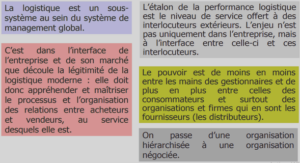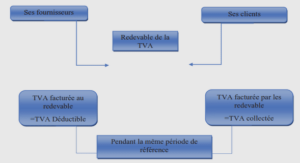Among the most powerful and dominant Akan -speaking people of the Gold Coast (Ghana nowadays), the Ashanties seemed to have emerged within the forest region to make up well-organized groups of people able to control, to direct and t o manage their day-to-day activities.
The identification of the Ashanti groups of people and the brief examination of their political and economic aspects of life before 1731 will then help as a historical background to the study of the evol ution of the Ashanti‟s political, judicial, military and economic institutions up to 1824.
In the eighteenth century, the Ashanties( 1 ) were identified as people resulting from the amalgamation of five ethnic groups known as the Akans( 2 ), the Ga, the Ewe, the Guan and the Mole -Dagbani who spread over three different regions of the Gold Coast.
The Akans counted eighteen clans known as the Oyoko (considered as the Ashanti‟s royal clan), the Aduana, the Agona, the Asakyri, the Asenie, the Asona, the Bretuo, the Ekoona, the Dako, the Asokore, the Tena, the Dwum, the Atwea, the Adaa, the Kuona, the Atena, the Toa and the Abrade clans( 3 ) . In 1669, most of the Akans spread over the core of the forest region called the Tafo country( 4 ). The members of the Oyoko clan were located in Kumasi, Dwaben, Kokofu, Bekwai, Nsuta. Thirteen other non-Oyoko clans were situated in Mampon, Asumenya, Ofinso, Adansi, Edweso, Kumawu, Denyaase, Kwahu, Akwamu, Denkyira, Wassa, Nzima, and Assin while the other four Akan cla ns were situated in the south east and the north west of Kumasi in Akim, Accra, Gyaman and Bono, respectively.
The other four ethnic groups namely, the Ga and the Ewe consisted of seven small communities while the Guan and Mole Dagbani included respectively the Gonja and Dagomba tribes. The Ewe and Ga communities were situated in the seven regions of Ewe, Ga, Shai, Ada, Asogli, Ho and Peki i n the south east of the forest while the Gonja and Dagomba tribes were in the north . Thus, what will be examined first below will be the organization of the political institutions that were set to gather the Ashanti‟s ethnic groups.
The Ashanti‟s ethnic groups spoke different languages with distinguishable sub – cultural traits and origins, while some of these sub -cultural groups were small and compact, some others were large and strong enough to organize their kingdoms of varying size and degree of autonomy, to make up three main divisions within the core and the periphery of what was known at that time as the Ashanti empire.
The Political Divisions
Inside the three divisions, a certain hierarchy was greatly instituted among the main authority holders. The Metropolitan Ashanti included the king and his eight Office Holders (the king‟s local advisers). The Provincial Ashanti included seven Omanhene (known as sub-chiefs leading the Akan States) and the Local Ashanti division comprised the Local District Chiefs (in the Akan States) and the Ohyene (the Lineage-Heads in the Ga and Ewe communities) .
The Central Division
As it is shown on Diagram1, the king was the head of the empire within the Metropolitan Ashanti; he was eligible to such a position through Akan‟s established criteria. First, the election was set up by a body of king makers in the capital of Kumasi( 5 ). They comprised lineage -heads considered as traditional elders residing in Kumasi. They counted five members known as the Krontihene, the Adontenhene, the Kydomhene, the Benkumhene and the Oyokohene together with the members of the Oyoko royal family that is, the Queen mother and the king‟s maternal uncles whose attendance was of a great importance .
The election was instaured according to a system of matrilineal hereditary succession whereby only the former king‟s brothers and nephews from the mother‟s side could inherit property and be entitled to succession. In addition to matrilineal succession, physical and moral qualities of the candi date to succession were greatly considered, that is, he had to be free from physical blemish and quite strong and wise( 6 ) with a certain military and political experience respecting the whole local and traditional beliefs( 7 ). Two Ashanti kings marked the l ate seventeenth century and the first half of the eighteenth century: Osei Tutu (1695 -1731), commonly considered as the founder of the Ashanti‟s political institutions with the help of his fellow chiefs and Apoku Ware (1731-1750) who followed his predecessor‟s work and developed the political organization of the empire.
Osei Tutu or Tutu the conqueror was the main candidate for royal succession. In 1695, he inherited his sovereignty after the death of his uncle Obiri Yeboa (1663 – 1695). Born about 1645, he spent his youth in the royal court of Denkyira , the south eastern overlords of the Tafo-Kwaman region of the time. He later spent some time in the court of Ansara Sasraku, leader of Akwamu, and prior to his return to Kwaman (north of Kumasi) in the late 1670s to take over from Obiri Yeboa . Henceforth, tracing O.Tutu‟s moves after his rise to power furnished important insights into a state formation in Ashanti.
Osei Tutu was a political strategist. He was said to be a strong conqueror who acquired a large political and military experience during his stay in both Denkyi ra and Akwamu neighbouring states to become a military leader. He was also a wise sovereign at the head of the Oyoko clan. He began by establishing control over the region surrounding Kumasi (See map1 p.7). Then, he grouped other clan chiefs around his court, using Kumasi as his base. Later, he conquered the surrounding Akan chiefdoms. In doing so he took the title of Asantehene .
Within the empire, the Asantehene held a sacred position. Through the creation of the Golden Stool by the priest Akomfo Anokye, the Asantehene was the most venerated living person in Ashanti. The people of the empire, mainly the Akans feared and believed that the Stool embodied the spirit or soul of the whole Ashanti nation and that the Asantehene was the sol e and perpetual guardian of the Stool. The latter represented the ties of kinship that gave ultimate sanction to the different opponents. It was a fictitious extension of control among the king‟s subjects so that different st ates could be easily incorporated with in the Ashanti empire and through which the Asantehene became the guardian of the Ashanties‟ spirit and unity . By the institution of the Golden Stool, the Asantehene gained the support of the religious chiefs and became the centre to which all th e authority holders of the Ashanti empire were connected .
The subordinate members were eight lineage heads known as traditional elders. They consisted of the five electing members during the Asantehene‟s succession and three other Kumasi elders who reigned over eight divisions of the Kumasi State and were distinguished according to the name of their lineages. They were respectively known as the Oyokohene, the Krontihene, the Kidomhene, the Benkumhene, the Adontenhene, the Nifahene, the Akwamuhene and the Gyasehene.
In Metropolitan Ashanti, mainly in the capital Kumasi, the eight traditional elders were given the name of Office Holders and had definite stools (special Ashanti‟s wooden chairs) that differentiated them from other authority holders in the exercise of their functions close to their king. In 1720, they attended a new established council, the Advisory Council that was instituted and presided by the Asantehene Osei Tutu to maintain the political organization of the whole empire .
General Introduction |






